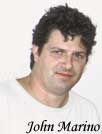| The economy is off -kilter, a war rages in the Middle East and crime is on the rise. Yeah, there's even a George Bush in the White House.
That assessment aptly describes the early 1990s and today's headlines. Of all these issues, however, the one that hits closest to home here in San Juan is crime.
A brazen afternoon triple murder in the parking lot of a suburban shopping mall this week is just the latest evidence that crime is not only on the rise here, but seemingly out of control.
The hit outside a Dunkin Donuts restaurant in Bayamón followed a bloody Labor Day weekend in Puerto Rico, with 13 violent deaths reported during the final holiday of the summer.
It also comes on the heels of a triple-homicide at a Bayamón pub and the killing of a 16-year-old high school student, who was struck down by a stray bullet while driving home as she unwittingly crossed through the fire of warring drug lords.
While Calderón administration officials say that crime, overall, is going down, even they admit that the one big bad number, the one written in blood, keeps going up. As of midnight Wednesday, there were 523 killings reported so far this year, 20 more than during the same period the previous year.
The high-profile crimes, as well as the steadily increasing murder rate, have sparked a sense of outrage in Puerto Rico not seen here since the early 1990s, when thousands marched against crime in demonstrations held by the Catholic Church and several civic organizations.
The father of 16-year-old Nicole Muñiz, the high school co-ed killed last month by the stay bullet, is planning another one next Oct. 5, the day of his daughter's birth. About 200 supporters showed up for an organizational meeting.
To be sure, there are some differences between today and the early 90s. The current murder increase, fueled by the illegal drug trade, in both direct killings and the social problems it breeds in its wake, has taken some innocent victims, but there's not the sense of random violence there was a decade ago, when fatal victims of carjackings, undertaken at suburban shopping malls and Puerto Rico's most upscale neighborhoods, shared headlines with those cut down by warring drug lords.
The economy, while down, is not nearly as hurting as it was back then. And the immediate prospects are for a slowly growing economy this year that is positive, if not exactly good, news.
Meanwhile, the more recent specter of public corruption, with several high profile prosecutions under the former Rosselló administration, is still crackling through today's headlines. One reason: D.C.-based federal prosecutors are investigating corruption allegations surrounding the North Coast Superaqueduct project.
In short, the return to the early 90s scenario won't be as detrimental to the image of Gov. Calderón as it was to the image of former Gov. Rafael Hernández Colón. Nor will it be as helpful to Pedro Rosselló today as it was back then, when his vow to crackdown on crime was one of the main forces that catapulted him into office in 1993.
But the early 90s flashback scenario is definitely detrimental to the Calderón administration and definitely of help to Rosselló.
The fact that the public safety issue is a weak point of the Calderón administration and a generally strong point during Rosselló's eight years in power only underlines this observation. Calderón is on her third police chief in as many years, and rumor has it there may be a fourth. (The current top cop, Victor Rivera, is a former judge who reportedly expects to be renamed to the courts before the end of Calderón's term.)
The all-important Police Department has been shaken repeatedly during those three years, with each new chief making personnel and structural changes. Rivera has come back to Square 1: with his calls for more cops and cash, and big, showy anti-crime operations echoing Rosselló's superintendent, Pedro Toledo. Rivera too has just reshuffled his top commanders, and undertaken still more structural changes within the department, which means another learning curve is still dripping through the ranks.
That's one reason Gov. Calderón might have felt compelled last week to spend in excess of $60,000 for a special televised address on crime. The speech offered no new anti-crime initiatives, but called on the public to get involved in the fight, and recounted everything the government is doing to stop crime.
A much-heralded Crime Summit the next day resulted in the appointment of a committee to draft a report on suggested actions to combat crime, as well as a call to Cabinet chiefs to do the same. Nice gestures, if not exactly visionary leadership.
Gov. Calderón may say she is against the "mano dura", or "tough hand" policy of the former Rosselló administration, but in not offering up anything new to replace it, her criticisms sound hollow. That's especially so when her top cop is looking more and more like Toledo these days -- right down to orchestrating highly publicized takeovers of public housing projects.
Sure, the governor said she would not activate the National Guard to fight crime in island streets. But given the worldwide panorama, and the fact that the local Guard just underwent its biggest activation in history to support the war in Iraq, that's probably not an option anyway.
John Marino, City Editor of The San Juan Star, writes the weekly Puerto Rico Report column for the Puerto Rico Herald. He can be reached directly at: Marino@coqui.net |

